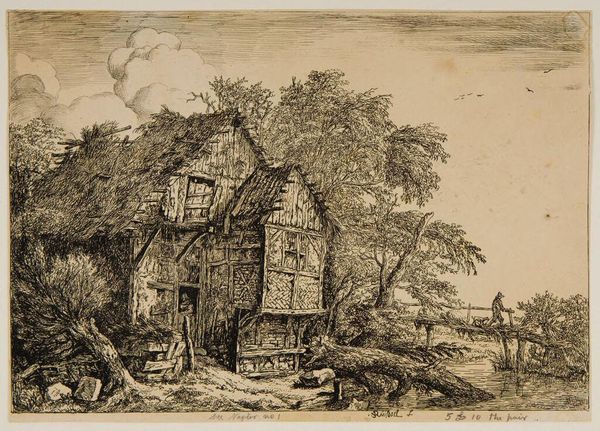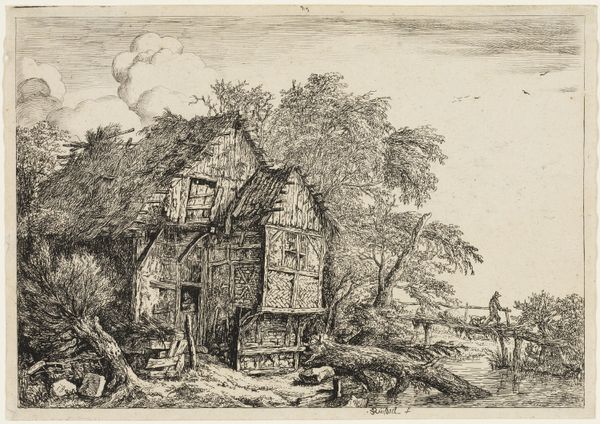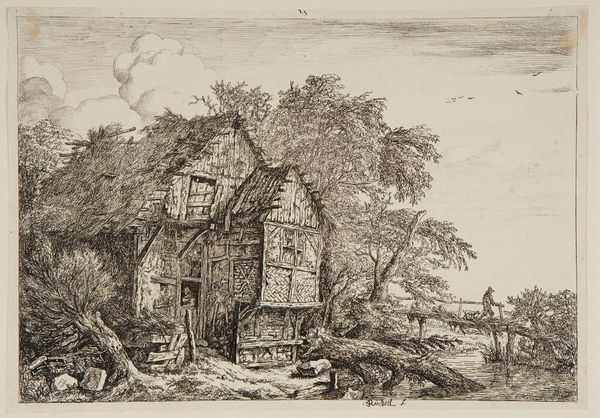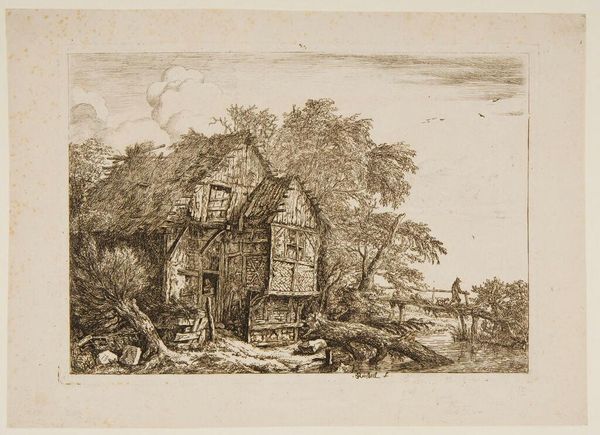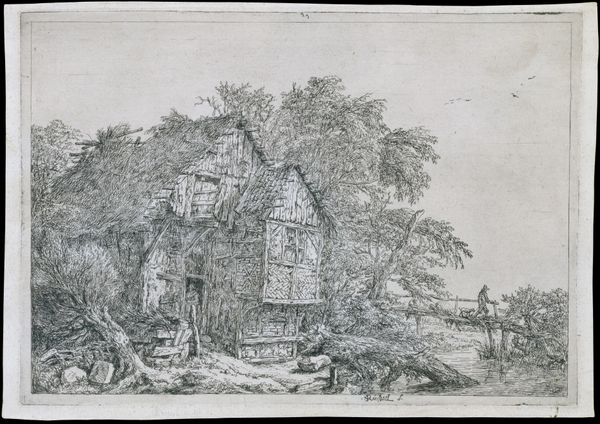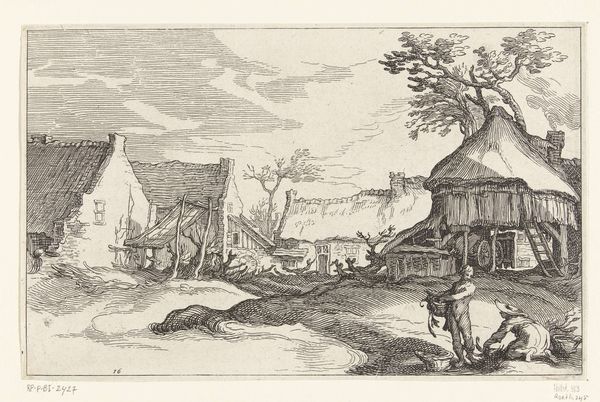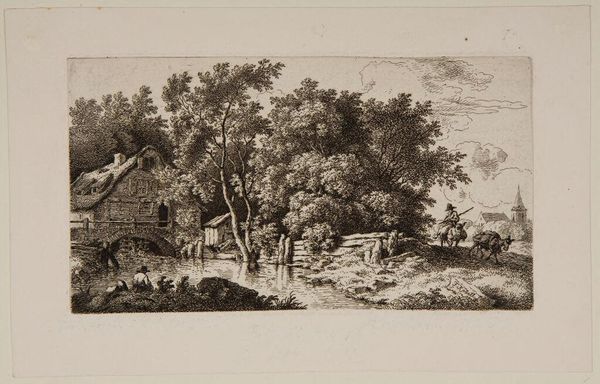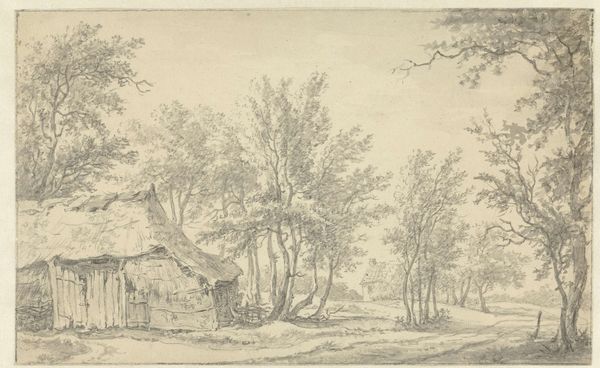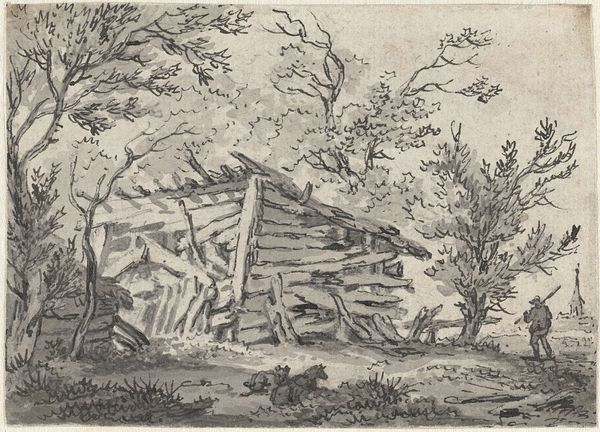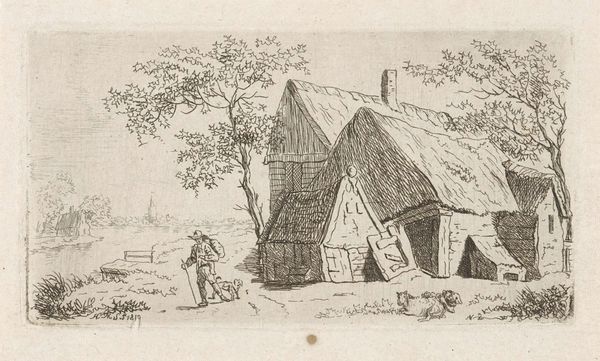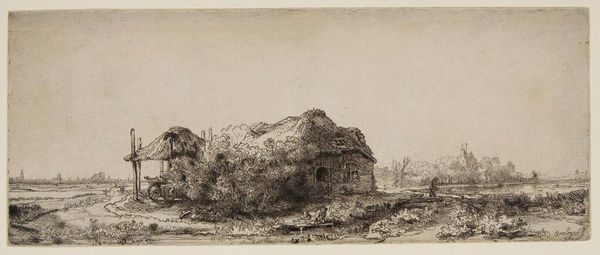
drawing, print, etching, intaglio
#
drawing
#
dutch-golden-age
# print
#
etching
#
intaglio
#
landscape
Dimensions: 7 5/16 x 10 5/8 in. (18.57 x 26.99 cm) (plate)
Copyright: Public Domain
Curator: Welcome. We're standing before Jacob van Ruisdael’s “The Cottage and Footbridge,” an etching from circa 1650 to 1655, held here at the Minneapolis Institute of Art. Editor: The first thing that strikes me is the level of detail, especially for an etching. The thatched roof looks almost shaggy, and there's such a contrast between the solidity of the cottage and the ethereal quality of the sky. Curator: Ruisdael was instrumental in establishing landscape as a significant genre in Dutch Golden Age painting. He, and other artists of the time, tapped into a growing sense of national identity and pride. The Dutch countryside itself became a subject worthy of artistic exploration. Editor: But looking at the cottage itself, there's a kind of precarity that's hard to ignore. It feels a bit run-down. How might this depiction relate to broader social realities of the period? Did it reflect a romantic view, or was it attempting to capture something more critical about the lives of those living outside urban centers? Curator: It is important to note Ruisdael’s intended audience for these works. Etchings and other prints had a unique social purpose and context. Because they were reproducible, they became powerful cultural artifacts, circulating art and ideas among a broader segment of society. Editor: That makes me wonder who consumed images like this. Was it largely the emerging middle class? What narratives did they construct around the people, places, and things that Ruisdael depicted? How might class anxieties and aspirations manifest through this type of pastoral scene? Curator: His landscapes rarely reflect literal places but were more invented from close observation; Ruisdael distilled aspects of the countryside into compositions of arranged picturesque motifs. What we get are romanticized notions of the rural landscape. Editor: Right. But who does that romanticism serve? Perhaps the cottage symbolizes both the promise and the precarity of rural life. There is certainly beauty here, yet the humble cottage also evokes questions of access, belonging, and social status in this context. Curator: I see it a bit differently. This work evokes an era where depictions of landscape allowed viewers a moment to revel in a world beyond the increasingly mercantile city. Editor: Maybe that escape speaks to the yearning for simpler times. Still, recognizing the context can push us to see more than a picturesque scene; it invites us to question the power dynamics that shaped what—and who—is valued within visual culture. Curator: Well said. Art provides these multiple entry points; by discussing those diverse viewpoints, we deepen the impact and understanding of art within contemporary culture.
Comments
No comments
Be the first to comment and join the conversation on the ultimate creative platform.
